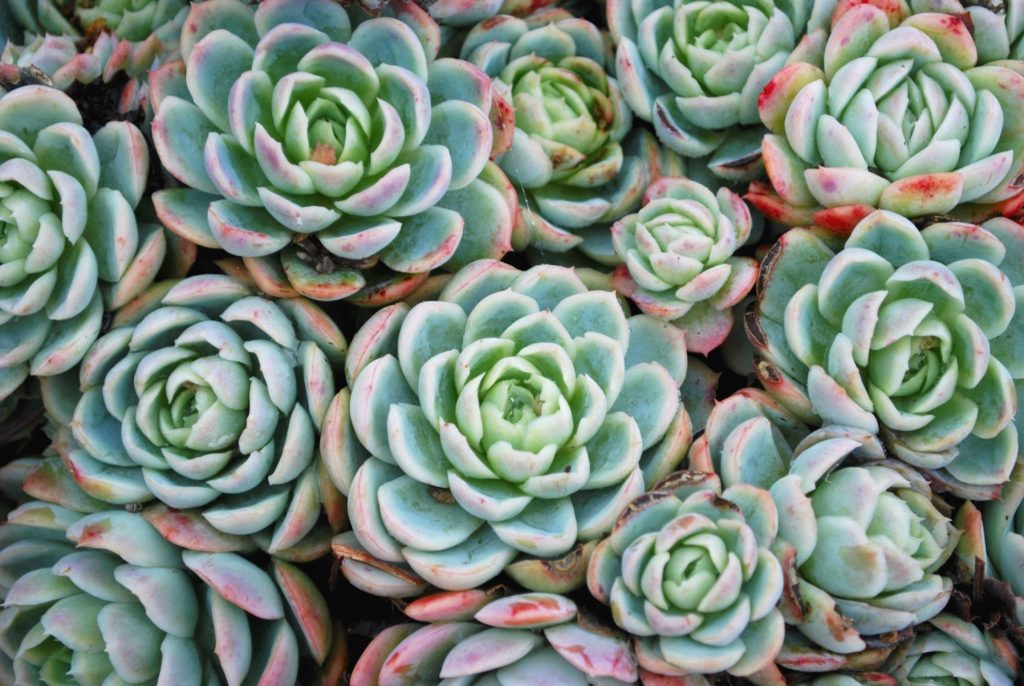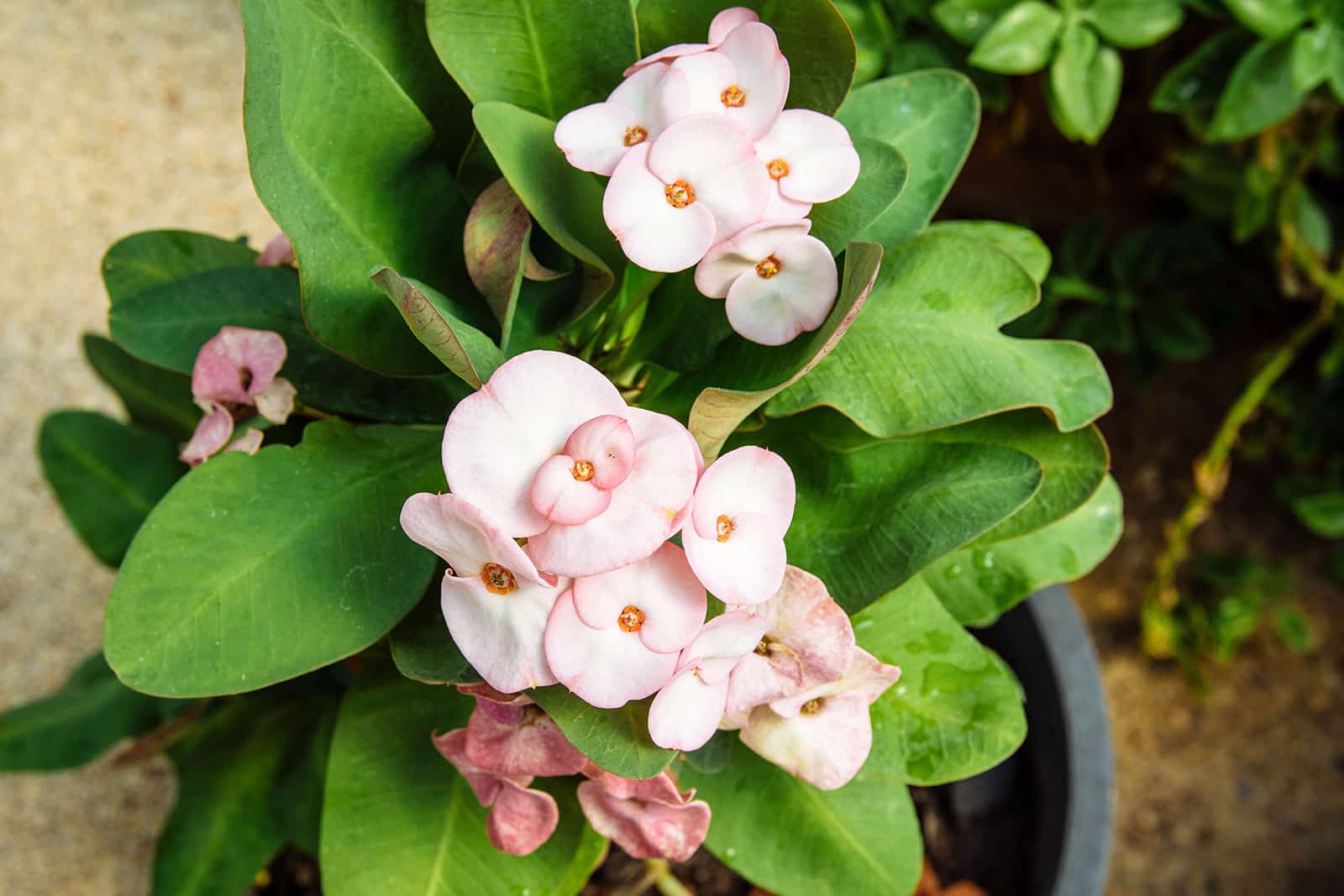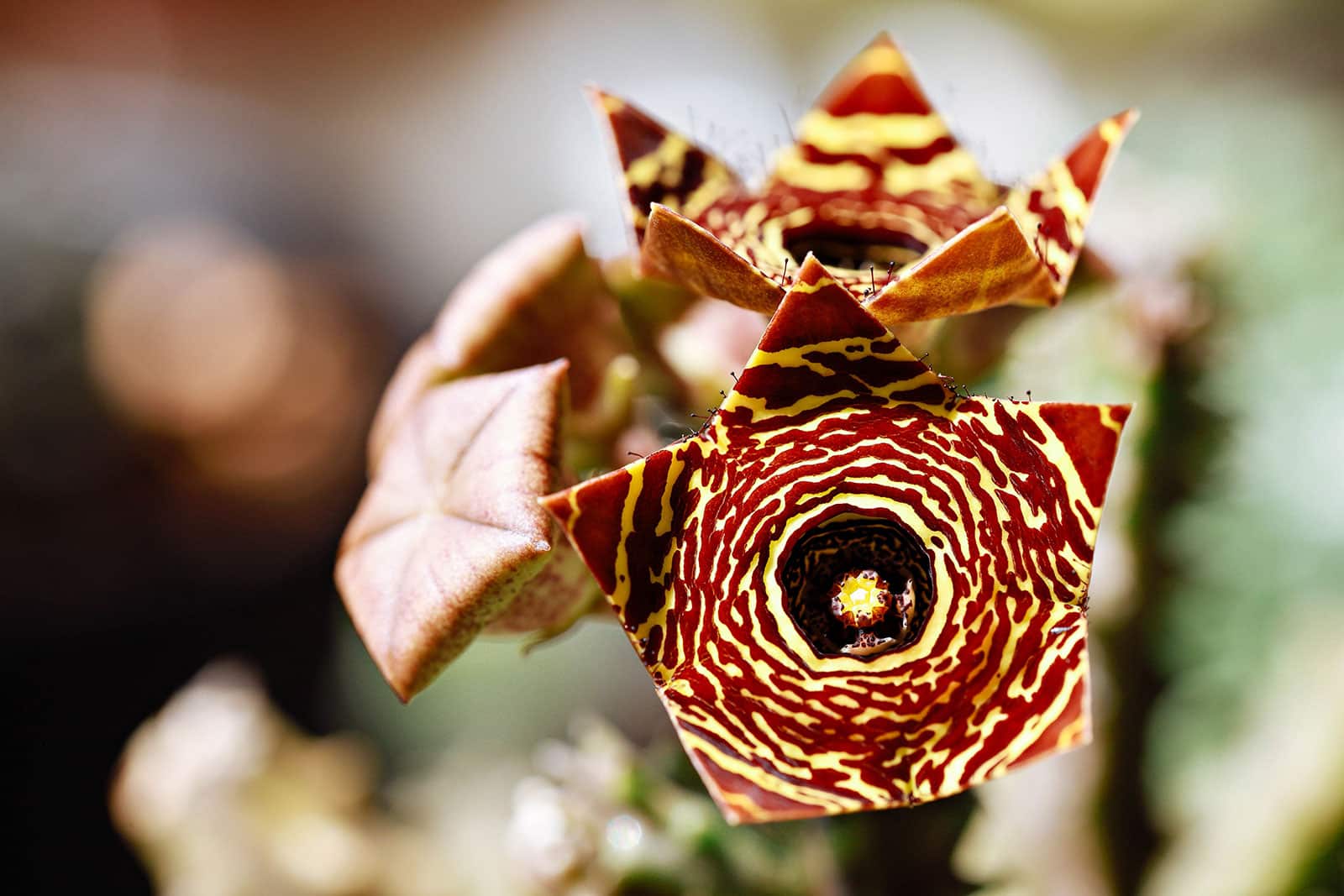#17 Succulents That Look Like Pretty Flowers You’ll Want in Your Garden
Flowers are beautiful but often require a lot of care and maintenance. Succulents, on the other hand, are low maintenance plants that can last for years with minimal effort. Fortunately, there are many succulents that look just like flowers! With their gorgeous colors and unique shapes, these succulents are perfect for adding long-lasting beauty to your home or garden.
In this article, we’ll highlight 17 of the best succulents that look like flowers. Whether you want to grow them indoors or outdoors, adding these succulents to your space is an easy way to enjoy flower-like beauty without the high maintenance.
1. Echeveria
Echeveria is one of the most popular types of succulents due to its stunning rosette shape and wide variety of colors. With ruffled pointed leaves that resemble flower petals many Echeveria varieties look just like roses or carnations. Some popular varieties include Echeveria Black Prince, Echeveria Perle Von Nürnberg, and Echeveria Ruby Blast. Echeveria blooms in spring and summer with bell-shaped flowers on long stems.
2. Kalanchoe
Brightly colored Kalanchoe is another excellent choice for succulents that look like flowers. Kalanchoe produces clusters of showy blooms in red, orange, pink, yellow, and white hues that last for weeks. Some popular Kalanchoe varieties include Kalanchoe Blossfeldiana, Kalanchoe Luciae, and Kalanchoe Fedtschenkoi. Kalanchoe does best in bright, indirect light and blooms in late winter to early spring.
3. Aeonium
The rosette shape of Aeonium gives it a very floral appearance. Pinwheel-shaped leaves grow closely packed together, resembling the petals of a flower. Aeonium produces yellow, cone-shaped flower clusters on long stems in late winter and spring. Some popular varieties are Aeonium Sunburst, Aeonium Kiwi, and Aeonium Zwartkop.
4. Epiphyllum
Commonly called Orchid Cactus, Epiphyllum is prized for its large, showy blooms in vibrant colors. Its flattened stems produce delicate flowers up to 6 inches wide in shades of red, orange, pink, white, and yellow. Epiphyllum blooms best when slightly pot-bound and makes an excellent hanging plant.
5. Crown of Thorns
With sharp thorns and showy color, the Crown of Thorns succulent definitely resembles a floral bloom. It produces ongoing clusters of small flowers in bright shades of red, pink, white, orange, and yellow. Provide plenty of light for the best color and blooms.
6. Flaming Katy
Flaming Katy, another common name for Kalanchoe blossfeldiana, lives up to its name with clusters of red, orange, or yellow blooms. The profuse flowers and scalloped foliage make this succulent look just like a flower in full bloom. It does best in bright light and blooms in winter or spring.
7. Chenille Plant
With long, fuzzy red stems bearing bright red flowers, the Chenille Plant (Acalypha hispida) is aptly named for its resemblance to chenille fabric. The fuzzy blooms look almost artificial. Chenille Plant thrives in humid environments and bright, indirect light.
8. Moonstones
Native to Mexico, Pachyphytum oviferum goes by the nickname “Moonstones” for its plump blue-gray leaves resembling round river stones. But it’s the cheerful clusters of pink blooms in spring that give Moonstones its flower-like charm. Grow it in full sun for the brightest color.
9. Easter Cactus
Closely related to the Christmas Cactus, Easter Cactus (Hatiora gaertneri) produces abundant blooms in shades of red, orange, white, pink, and yellow in springtime, usually around Easter. Its segmented stems sprout loads of brightly colored flowers. Grow Easter Cactus in moderate to bright, indirect light.
10. Desert Rose
Desert Rose (Adenium obesum) is a stunning succulent that truly lives up to its name. It forms a swollen base from which spring eye-catching clusters of red, pink, white, or yellow trumpet-shaped blooms. The colorful flowers and bulbous shape give it the appearance of a floral bouquet.
11. String of Pearls
Trailing succulent String of Pearls (Senecio rowleyanus) is prized for its spherical, pea-like leaves that resemble a pearl necklace Occasionally it even produces small, fragrant white flowers that add to its floral charm Provide plenty of sunlight for the healthiest growth.
12. Wax Plant
A popular houseplant, wax plant (Hoya carnosa) is an epiphytic vining succulent with pretty star-shaped flowers that release a delightful fragrance at night. The waxy foliage comes in different variegated forms, while the flowers appear in shades of pink, red, and white. Grow wax plant in bright, indirect light.
13. Firesticks
Firesticks (Euphorbia tirucalli) is named for its vibrant reddish-orange stems that resemble coral sticks or pencil-thin pompoms. Occasionally bearing tiny greenish flowers, its colorful foliage provides its main ornamental value. Grow Firesticks in full sun for the brightest color.
14. Zebra Plant
Zebra plant (Haworthia attenuata) is named for its eye-catching green leaves edged with white bumpy bands, resembling zebra stripes. This petite succulent occasionally produces tall flower stalks topped with dainty white blooms. Its small size makes it perfect for windowsills and dish gardens.
15. Hens and Chicks
A garden classic, Hens and Chicks (Sempervivum sp.) is a mat-forming succulent composed of multiple tight rosettes resembling flower petals. The “chicks” are offsets that spread around the parent plant. Hens and Chicks produces pretty bell-shaped blooms on long stalks in summer.
16. Ice Plant
Ice plant (Delosperma cooperi) forms a lush, spreading lawn-like groundcover blanketed in vibrant daisy-like blooms in shades of fuchsia, orange, red, yellow, and white. The colorful carpet of cheery little flowers resembles a floral meadow. Grow ice plants in full sun and well-drained soil.
17. Stonecrop
With its starry flowers and carpeting growth habit, stonecrop (Sedum sp.) provides a long season of color. The attractive succulent foliage forms a dense mat covered in clusters of blooms in shades of pink, red, yellow, and white. Stonecrop does well in poor soil, heat, and drought.
When grown in the right conditions, these succulents will thrive for years and add stunning flower-like beauty to your indoor or outdoor space. Here are some tips for growing succulents that look like flowers:
Light: Most succulents need several hours of direct sunlight per day to maintain their shape, color, and blooms. Provide at least 4-6 hours of sun.
Soil: Use a well-draining cactus or succulent soil mix and add extra perlite or gravel for drainage.
Water: Allow soil to dry out between waterings, then soak soil completely. Too much moisture can lead to rot in succulents.
Fertilizer: Use a balanced liquid fertilizer at half strength during the growing season. Avoid high-nitrogen formulas.
Temperature: Average room temperatures around 65-75°F are ideal. Some succulents tolerate short periods down to 50°F.
Pruning: Remove spent flower stalks and any damaged or stretched-out growth to encourage bushy, compact plants.
With their minimal care requirements, succulents that look like flowers are easy to grow both indoors and outdoors. Their stunning colors and textures provide long-lasting beauty. Add some of these fabulous succulents to your garden or containers for gorgeous flower-like appeal all year long.

Pachyphytum sp. (moonstone succulent)

Okay, this may not be the most spectacular bloomer—and certainly not the biggest—but I just love that look of a tiny little succulent with a ridiculously large flower spike.
Pachyphytum flowers are neutral in color on the outside, but bright red on the inside! The bunches of buds begin to develop when temperatures start rising in spring.
The most popular member of the genus Pachyphytum is P. oviferum, which is also called the moonstone or Mentos succulent due to the unusual round shape of its foliage. This little rosette succulent from Mexico stays quite small and is easy to grow as long as you provide it with enough sun.
Originally, Pachyphytum oviferum is a greyish blue in color with yellow to green flowers, but nowadays there’s also a pastel pink cultivar with matching rose blooms.
Did you know? Nurseries don’t just select succulents based on color. They also cross different species to create entirely new plants! One example is the “Pachyveria”, a hybrid between the moonstone succulent and an Echeveria species.
Euphorbia milii (crown of thorns)

You may not realize it due to the woody stems and not all too fleshy leaf texture, but the crown of thorns (Euphorbia milii) really is a succulent. This species has been a staple in the houseplant hobby for years.
That’s not just because of its pretty flowers, but also because according to legend, it’s the plant that was used for—you guessed it—Jesus’ crown of thorns.
Thorns or no thorns, I’d say this Madagascar native is the perfect addition to a collection of flowering succulents. It can bloom year-round and is easy enough to care for as long as you give it enough light.
Like many other succulents, it prefers being grown outdoors during the warm summer months, and will usually flower more abundantly as a result.
Euphorbia milii flowers are naturally light red in color. However, as with most of the plants on this list, different cultivars exist. Their flowers can be white, pink or orange, among other colors.

If you love the more unusual flowering succulents, the African genus Huernia may just be the perfect addition to your collection.
This plant is naturally pollinated by flies, which are attracted to the color and smell of carrion. The result are funky-looking flowers that don’t always smell all too nice. (Although I’ve smelled worse, like the flowers of a popular houseplant called the purple passion. Ugh!)
Aside from the dramatic star-shaped flowers in tones of red, yellow, and greenish, the plant itself is quite unusual as well. Huernias don’t have leaves, only stems covered in short, soft spikes. Some species can grow very long stems, making them ideal for a nice hanging basket.
The most popular plant in the genus is Huernia zebrina (the lifesaver plant, due to the shape of its flowers). You may also come across H. schneideriana, which has dark red blooms.
Want more? If you like Huernia, also consider a similar genus called Stapelia. They look quite a bit alike, at least until the flowers appear. The blooms on Stapelia are just as gorgeous, but they’re actually even bigger than those produced by their Huernia cousins!
10 Beautiful Succulents that Look Like Roses
FAQ
What is the name of the succulent that looks like a flower?
Sedum: Low-growing and hardy, Sedum succulents produce clusters of tiny star-shaped flowers in shades of yellow, white, pink, or red, making them popular …Jan 28, 2025
How do you take care of blooming succulents?
When you see a bloom stalk or flower developing on your plant, begin adding an hour more sun each day, if possible. Gradually add more until it is in full sun all day. If you grow your plants indoors, find the brightest, sunniest window and acclimate them there. Keep a check that leaves and pads don’t burn.
How do I identify what succulent I have?
To distinguish between different types of succulents, look for the details. As we’ve seen, some varieties have ciliate hairs along the leaf margins, others have smooth leaves. Look also for the leaf thickness. In general, Echeveria have thicker leaves than sempervivum or aeonium, though not as thick as Graptopetalum.
Which succulents have the most unique shapes?
While all succulents are unique due to their extraordinary shapes, varieties, colors, and combinations–These 31 succulents with unique shapes are the most. If you love collecting these low-maintenance plant, save this list. 1. Haworthia cooperi var. truncata 2. Echeveria ‘Ice Age’ 3. Lenophyllum guttatum f.variegata 4.
What are some unusual succulents?
The climbing onion is an odd and unusual specimen that you must add to your succulent collection. Leaf-like appendages form its foliage, and it also grows star-shaped green-yellow flowers. 27. Crassula falcata The propeller plant, as it is popularly famous as, is quite a unique specimen with gray-green foliage.
Do succulents Bloom?
Plant in well-draining soil during the spring or fall. Many might be unaware that this stately succulent actually flowers. The plants live long lives, but once they bloom, they die. Until then, this easy-to-maintain succulent will grow tall leaves in beautiful green hues to decorate an arid yard.
What is a Madagascar succulent & what does it look like?
Native to Madagascar, this flowering succulent has oval-shaped leaves and blooms clusters of tiny, colorful flowers, coming in white, pink, yellow, and more. “It flowers in almost every color imaginable,” says Mann. They are also very tough and can be a great houseplant on a table or near a window.
Are flowering succulents a good indoor plant?
Nevertheless, flowering succulents are a great addition to your indoor garden and a wonderful seasonal perk. Their vibrant blooms and unique textures bring a splash of color and life to any space, making them a favorite among plant enthusiasts.
What is a rose shaped succulent?
‘Peaches and Cream’ features a vivid rosette of blue-green leaves with a light pink hue. The farina layer on top gives the succulent a thoughtful appeal. 3. Cat’s Claws Botanical Name: Echeveria chihuahuensis Cat’s Claws is another beautiful rose-shaped succulent. When the plant receives plenty of sunlight, the pale yellow leaves turn pink to red.
